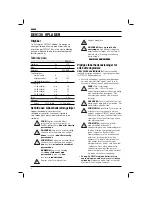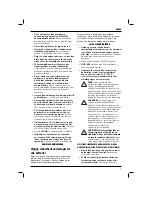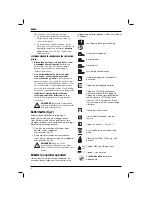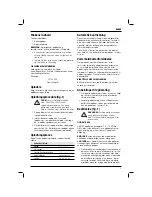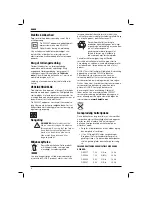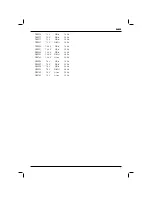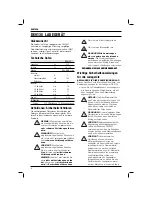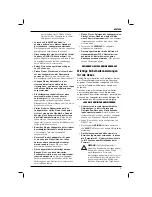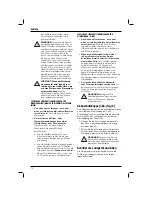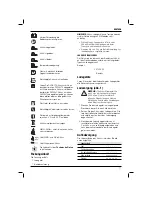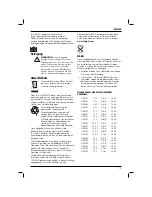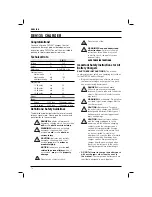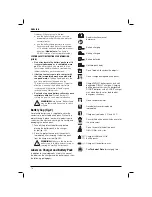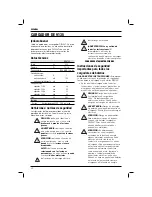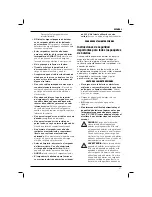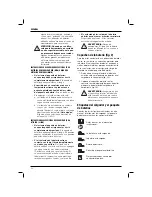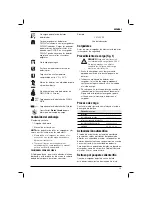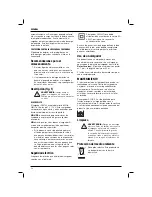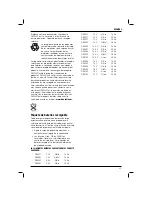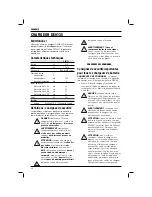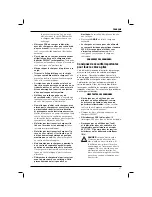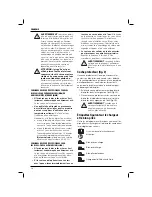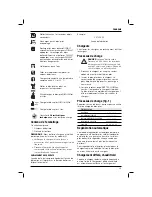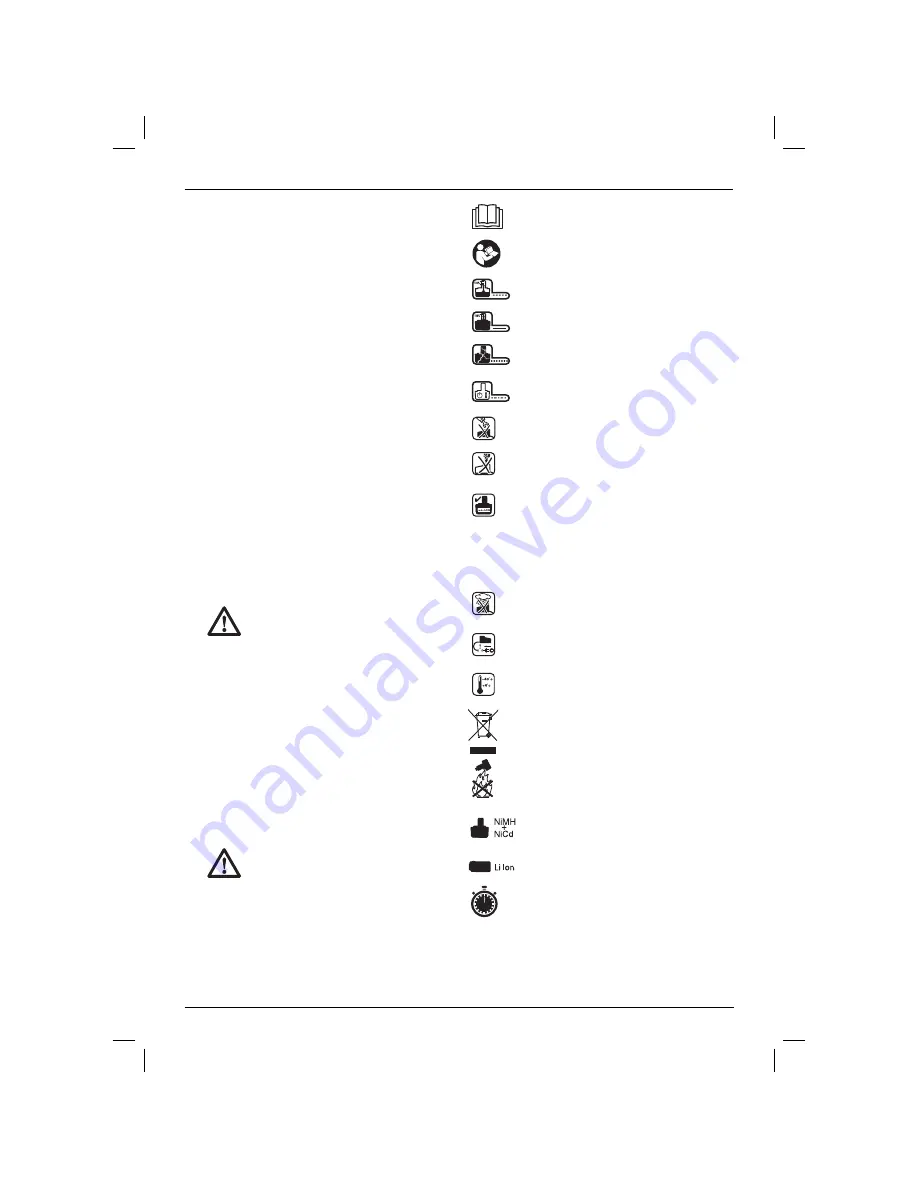
ENGLISH
16
However, if the outer seal is broken:
a.
and the battery liquid gets on your skin,
immediately wash with soap and water for
several minutes.
b.
and the battery liquid gets into your eyes,
flush them with clean water for a minimum
of 10 minutes and seek immediate medical
attention. (
Medical note:
The liquid is
25-35% solution of potassium hydroxide.)
SPECIFIC SAFETY INSTRUCTIONS FOR LITHIUM ION
(LI ION)
• Do not incinerate the battery pack even if it
is severely damaged or is completely worn
out.
The battery pack can explode in a fire.
Toxic fumes and materials are created when
lithium ion battery packs are burned.
• If battery contents come into contact with
the skin, immediately wash area with mild
soap and water.
If battery liquid gets into the
eye, rinse water over the open eye for
15 minutes or until irritation ceases. If medical
attention is needed, the battery electrolyte
is composed of a mixture of liquid organic
carbonates and lithium salts.
• Contents of opened battery cells may cause
respiratory irritation.
Provide fresh air. If
symptoms persists, seek medical attention.
WARNING:
Burn hazard. Battery liquid
may be flammable if exposed to spark
or flame.
Battery Cap (fi g. 2)
A protective battery cap is supplied to cover the
contacts of a detached battery pack. Without the
protective cap in place, loose metal objects could
short circuit the contacts, causing a fire hazard and
damaging the battery pack.
1. Take off the protective battery cap before
placing the battery pack in the charger
or tool (fig. 2A).
2. Place the protective cap over the contacts
immediately after removing the battery pack
from the charger or tool (fig. 2B).
WARNING:
Make sure the protective
battery cap is in place before storing or
carrying a detached battery pack.
Labels on Charger and Battery Pack
In addition to the pictographs used in this manual,
the labels on the charger and the battery pack show
the following pictographs:
Read instruction manual
before use.
Battery charging.
Battery charged.
Battery defective.
Hot/cold pack delay.
Do not probe with conductive objects.
Do not charge damaged battery packs.
Charge D
E
WALT battery packs only with
designated D
E
WALT chargers. Charging
battery packs other than the designated
D
E
WALT batteries with a D
E
WALT charger
may make them burst or lead to other
dangerous situations.
Do not expose to water.
Have defective cords replaced
immediately.
Charge only between 4 °C and 40 °C.
Discard the battery pack with due care for
the environment.
Do not incinerate the battery pack
NiMH, NiCd+ and Li Ion.
Charges NiMH and NiCd
battery packs.
Charges Li-Ion battery packs.
See
Technical Data
for charging time.

